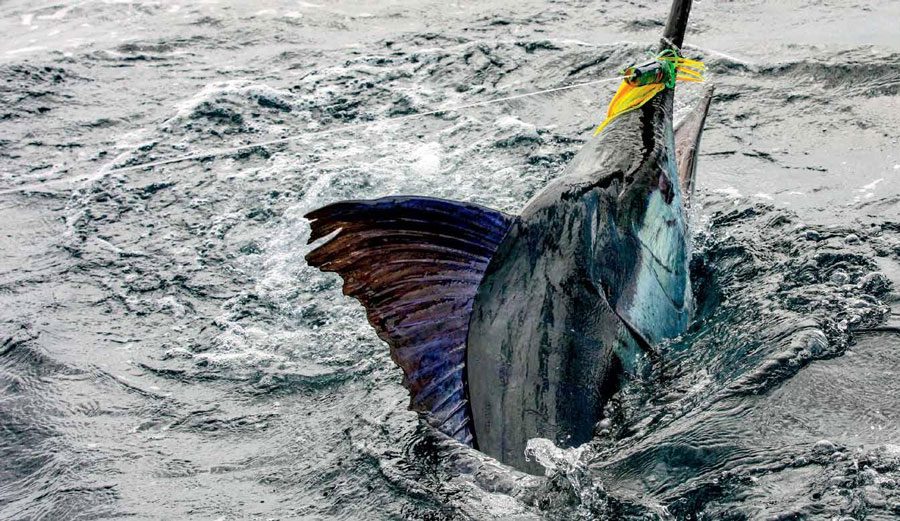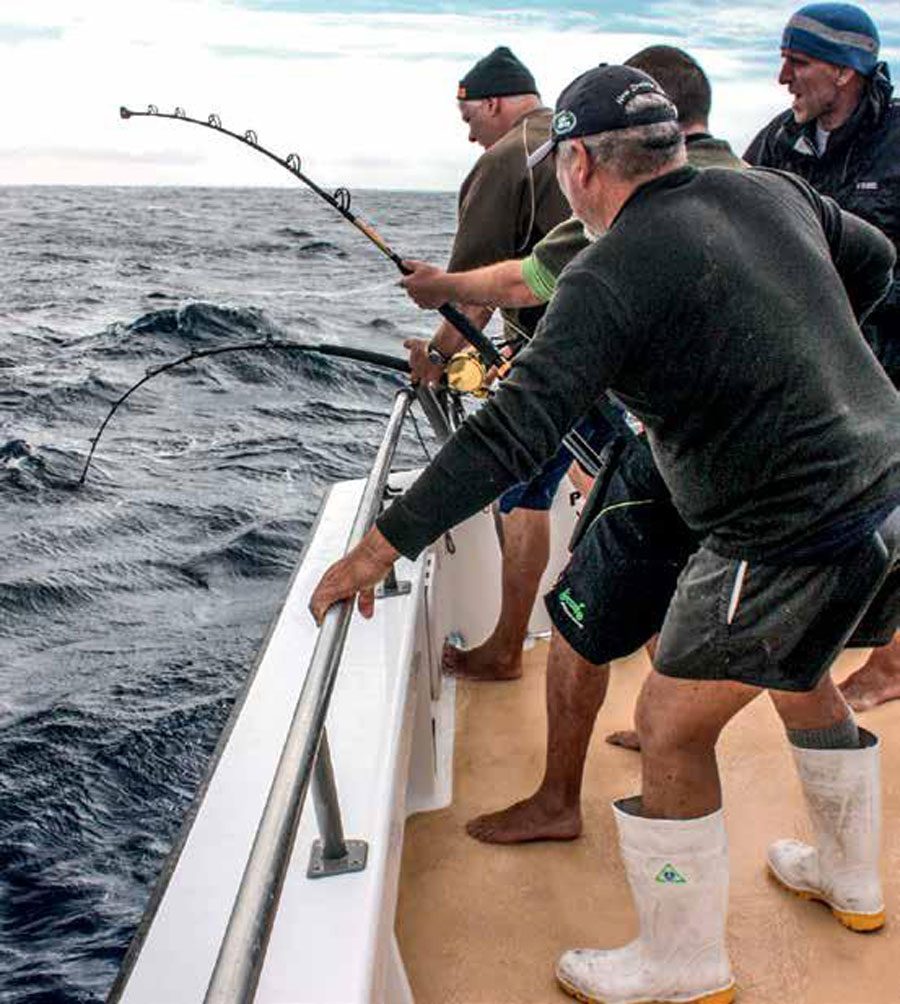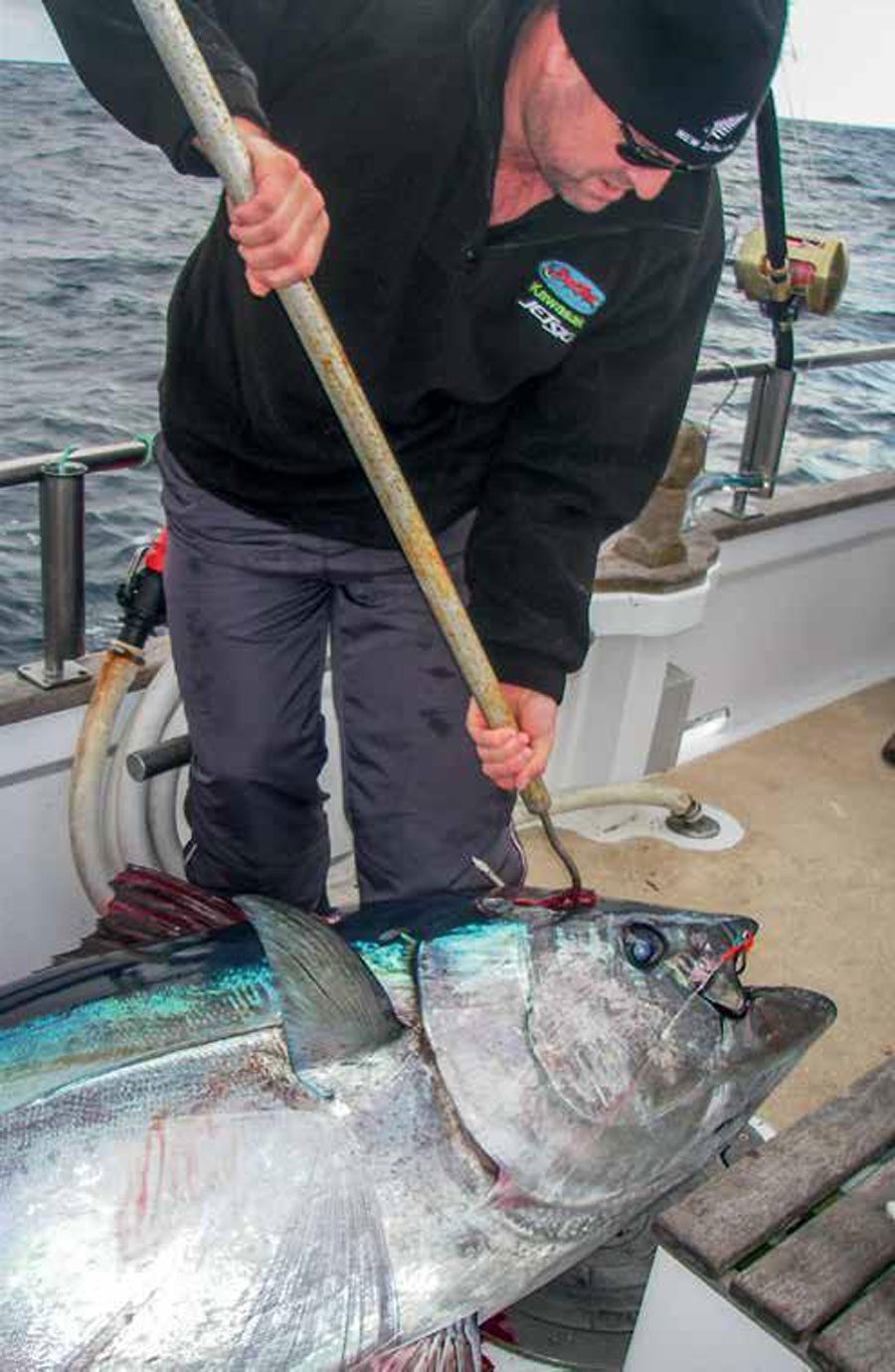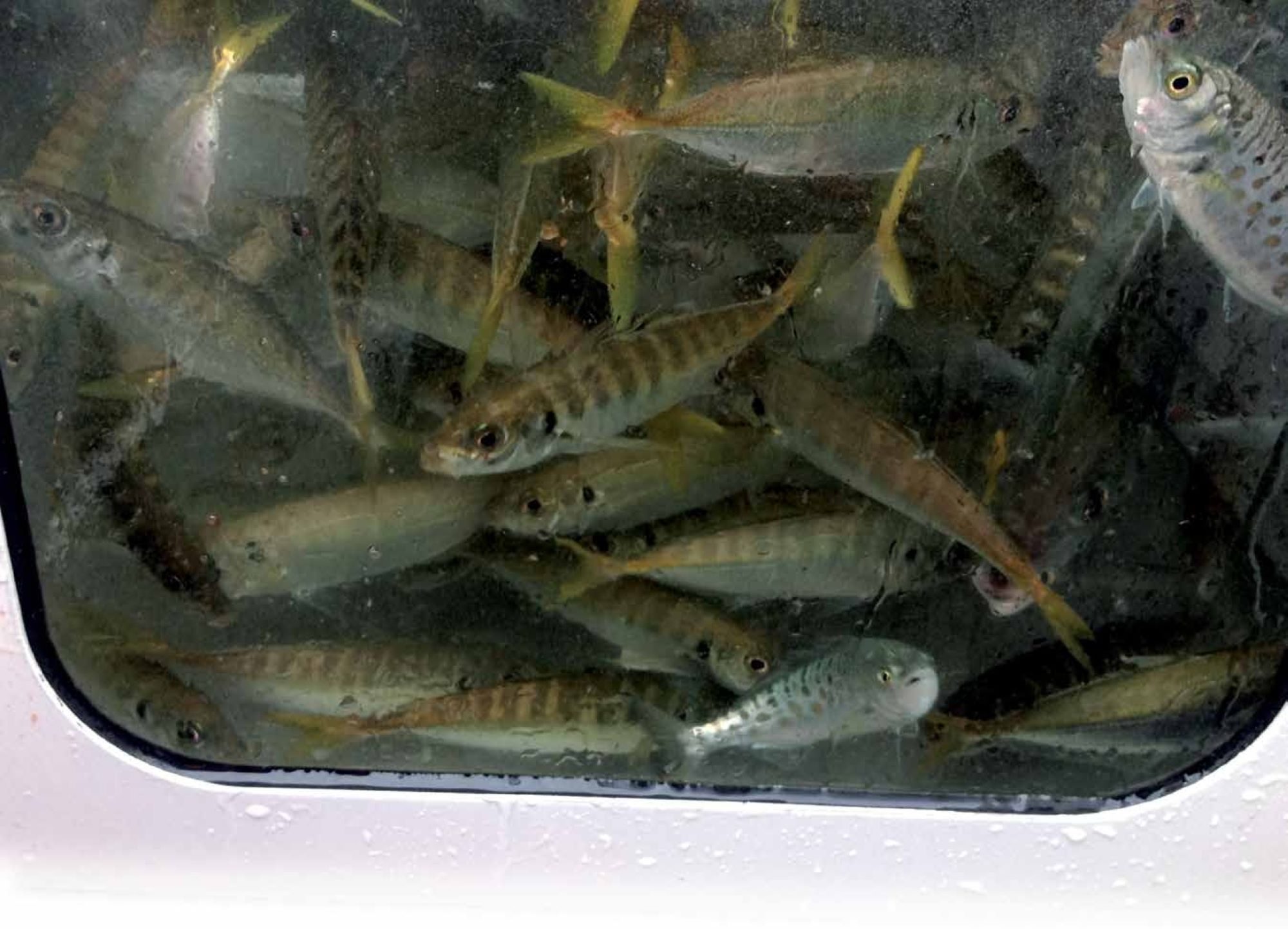

Oceanic currents, temperature breaks, structure and concentrations of baitfish are key factors when searching for pelagic gamefish.
Predominantly featureless and extending to the horizon, the sea can be a daunting proposition for anglers trying to find fish.
When one factors in an incredibly varied underwater environment and a myriad of different types of fish, each with its own unique characteristics and requirements, solving the puzzle becomes more complicated still.
However, if we isolate the main elements that draw and hold different fish (many of which overlap or are interrelated), identifying likely fishing spots becomes a lot easier.
These elements include: current; water temperature; seasonal migration [of fish]; shelter – from predators or to ambush prey from – food availability; and the need to procreate.
We will start this series by discussing the role of currents and how they affect seasonal fishing in New Zealand, beginning with our world-famous game-fish fishery.

CURRENTS AND GAME FISH
Oceanic currents are moving bodies of water largely driven by global wind systems fuelled by the sun’s energy. Ocean currents are influenced by wind direction, Coriolis forces caused by the Earth’s rotation, and landforms that interact with them.
Acting like giant conveyor belts, currents transport pelagic predators and their prey to different parts of the globe. Different currents are populated by different animal and plant communities, generally determined by a current’s origin and subsequent journey.
As you might expect, in our hemisphere, currents arriving from the tropics are much warmer than those originating in more southerly climes. The sea life carried along by the former, including the game fish we want to catch, tends to reflect this.

THE GAMEFISH CALENDAR
For Kiwi fishers, the game season usually kicks off in mid-tolate December, starting with the arrival of smaller ‘baitfish’ species like saury, flying fish and skipjack tuna. These are accompanied by the first wave of predators that feed on them – bigeye tuna, several shark species and shortbill spearfish.
A few weeks later, the more tropical predators start arriving, including mahimahi, yellowfin tuna and striped, black and blue marlin.
Fortunately for us, when the water cools again and the more tropical currents retreat in May or June, we find ourselves with new opportunities as different oceanic currents push in.
For example, in winter and spring we have excellent bluefin tuna, albacore tuna and broadbill swordfish fisheries to take advantage of, resulting in exciting sportfishing options virtually all year round.

SST CHARTS
Recent years have provided us with the technology to locate and track the warmest current areas before heading out fishing, saving time and fuel. Sea Surface Temperature (SST) charts are collated using satellite data. The charts reveal water temperature at the ocean’s surface and provide information on current direction and speed.
Having pored over SST charts (ideally over several days), most game fishers will also wish to identify the greatest concentrations of chlorophyll. Chlorophyll is a green substance found in the leaves of plant and also in phytoplankton, the microscopic building blocks of the marine food chain.
Phytoplankton is eaten by zooplankton, krill and tiny fish, which in turn are eaten by bigger fish, and so on. Find the chlorophyll and chances are you’ll find bigger predators nearby. (FishTrack.com provides all this information and more.)

FISHING THE TEMPERATURE BREAKS
After arriving in such areas, more experienced skippers will try to find exactly where cooler water meets warmer water, which is more easily said than done, especially on a rough day. Sometimes temperatures will vary by just fractions of a degree, but in other instances they may vary by several degrees. The colour of the water on either side can be very different, too.
Where warm water meets cooler water is called a temperature break and on a calm day they often show up as long stretches of calmer, oily water, frequently attended by feeding birds and signs of baitfish. They are a potential fishing goldmine.
That is because different fish species often find the temperature on one side of the break or the other more comfortable, especially smaller fish with less bulk to protect them from thermal shock. For them, the temperature break acts as a natural barrier, forcing them to swim along the edges.
Predators understand this and patrol these areas too, their greater bulk providing better protection from temperature variations, allowing them to move easily between warmer and cooler water in their search for food.
Game fishers can find success by adopting a similar movement strategy. Indeed, while the water on one side of the temperature break may look more attractive to us – bright, clear and azure in colour as opposed to a creamier green, say – the strikes often come out of the green zone.

However, it’s not necessary to zigzag across the two bodies of water continuously; by all means troll in one direction for hundreds of metres before changing course – and keep the turns modest, so the lures don’t cross over and tangle.
The direction changes are important, though. Not only do they allow you to explore both sides of the temperature break, they also make the lures on one side of the pattern speed up while those on the other side slow down. The sudden variation in lure action might trigger any uncommitted gamefish following the lures to strike.
CURRENT AND STRUCTURE
It is also worth checking out any significant underwater structures in the area, even if they are located in very deep water. Ridges and seamounts serve to push cooler, nutrientrich water upwards, providing fodder for the whole food chain, including large game fish at the top.
The biggest structures also reduce water depth, resulting in stronger currents flowing over them. Large, powerful predators use this to their advantage when pursuing smaller prey.
The Wanganella Banks, Ranfurly Banks, King Bank and Middlesex Bank are excellent examples of structures that provide amazing fishing.

LOVELY MEATBALLS!
You will often find meatballs in the scenarios described above – schools of baitfish coralled into a condensed mass by predators, including tuna and marlin, and dolphins and sharks, too.
They are very exciting to witness. If the predators are yellowfin, you can expect explosive white water activity and will sometimes see big tuna jumping well clear of the water in pursuit of their prey; marlin generally feed more precisely, occasionally showing slashing bills, fins and upper bodies.
It therefore pays to keep an eye out for concentrations of seabirds, either milling around and obviously feeding, or big rafts of them sitting on the surface, perhaps surrounded by a large patch of apparently oily water. You can actually smell where significant feeding activity has taken place if the wind is from the right direction!
It’s always worth investigating concentrations of seabirds. While fishing around actively feeding birds would seem more likely to bring success, fishing around rafting birds often proves worthwhile too, especially where there’s evidence of very recent feeding activity – an oily patch and/or a ‘snowfall’ of glittering scales in the water. Deploying a live mackerel or koheru can work wonders!

NOT JUST A FAD
Very occasionally, if you keep a sharp eye out or maybe get a bit lucky, you’ll come across floating or semi-submerged FADs (Fish Attraction Devices). These can be natural or manmade. Natural can include logs, dead whales or large rafts of floating kelp, while manmade FADs we’ve seen include fridges, navigation devices, broken-off fishing buoys – even a whole shipping container!
These items offer various small open ocean fishes varying degrees of precious shelter. Perhaps it’s similar to them as it is for us seeing a tree in the middle of a featureless desert. With all those small baitfish, squid and other tiny creatures seeking refuge under them, FADs are an irresistible attraction to larger oceanic predators.
Interestingly, the object does not have to be especially large (a single plastic safety helmet provided us with phenomenal fishing for mahimahi and yellowfin on one occasion), but older ‘floaters’ covered in weed and barnacles tend to be more productive than objects newly adrift.
So, always investigate floating objects in the open ocean during the warmer months, and ensure someone’s up on the bow or on the flybridge wearing polarised glasses to spot any fish holding deeper down.
TO SUMMARISE
• Consult SST charts for the warmest water and best concentrations of chlorophyll
• Keep an eye out for temperature breaks, incorporate occasional zigzags in your trolling, and cover both the warmer and cooler sides of the break
• Troll over and around any significant underwater structure, even if it’s 300 metres down
• Watch for birds indicating possible ‘meatball’ action, as well as any floating objects. BNZ




